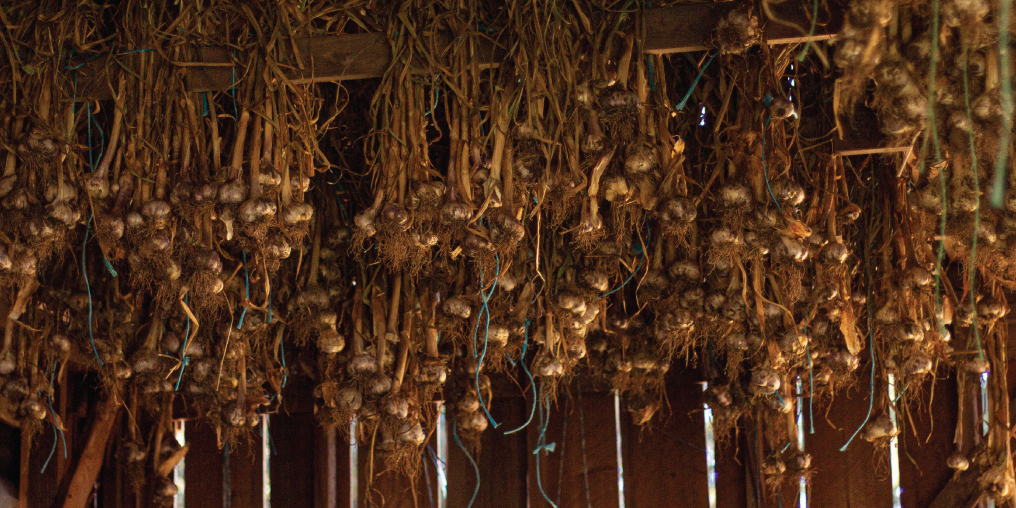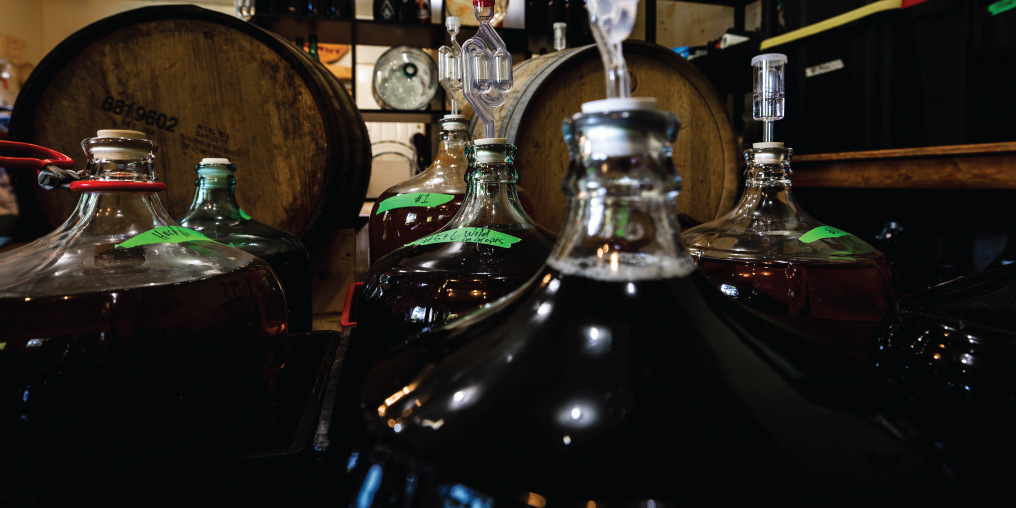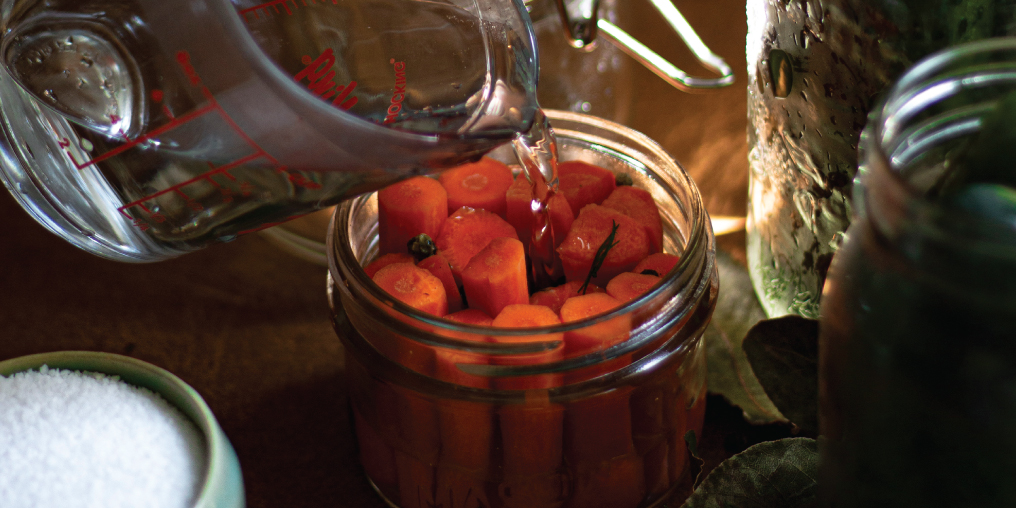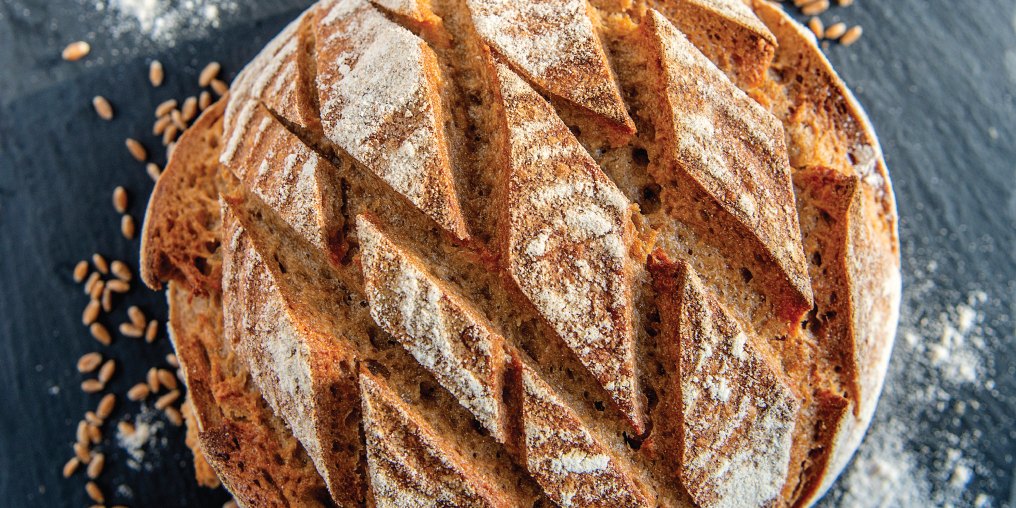The ashen moon hung low that brisk October night. Despite the obscuring fog, I could see my breath. The chill cut me a little deeper than the rest of my neighbours, as I was bereft of any clothing, planting my garlic naked, in the time-honoured tradition.
Or so I had mis-read.
It turns out planting garlic “naked” means to strip the garlic of its natural paper and husk —a practice not endorsed by local garlic farmer (and Electoral Area B councilwoman and all-round superhero) Arzeena Hamir.
Arzeena steered me in the right direction for planting garlic in our area: plant the fully dressed cloves in a sunny bed, without other alliums (onions, leeks, chives, etc.). Ensure the soil is loose, gets good drainage, and has compost mixed in. Top with mulch and keep watered. When those delicious scapes (green shoots) start to spiral in midsummer, trim back to ensure full, bulbous cloves. Put the scapes to good use in a pesto or a dressing, or add to any mixed vegetable dish for an early harvested treat.
You might ask, “Why bother planting my own garlic when it’s widely available and pretty cheap?” Well, sure, it is cheap and plentiful at the supermarket, but that’s primarily garlic imported from China. Never mind the issues of shipping a sub-par product around the world so grocery chains save a few pennies (think of the carbon footprint!)—the Chinese garlic we get here is stunted in terms of quality and flavour.
But good, healthy, local garlic tastes incredible. As if that weren’t enough, it contains wonderful natural antimicrobial properties that scientists are studying with increasing interest.
The magical property found in garlic is allicin, which is created when the cell walls are crushed or broken and two individual components (alliin and alliinase) are mixed. Allicin is responsible for the bulb’s fragrant and slightly sulphurous scent. All alliums have allicin, but it’s remarkably stronger in garlic.
Allicin acts against many types of microbes, notably some pathogens and their toxins, specifically influenza B, herpes simplex 1 and 2, rhinovirus, and more. It also stunts the growth of many parasites; is antibacterial, working particularly well against staph infections; and has even been shown to have limited anti-carcinogenic properties.
For over 4000 years, people have been known to employ garlic as a treatment for various ailments. Chinese medicine has long used it for respiratory and digestive issues; ancient Egyptians employed it for circulation and parasites; and some Indigenous North Americans brewed it into tea to combat flu symptoms. All of these discoveries came about independently, far preceding any meeting of individual cultures and peoples.
But I prefer to see it as the culinary wunderkind it is. It’s a punch of flavour in a small package and downright necessary in most modern kitchens, being just as important at the beginning of the cooking process (base for stocks, sauces, or marinades) as it is at the end (dressings, garnishes, and oils). You can accentuate the pungency, the spiciness, or the sweet qualities of garlic to yield different results, with little effort.
The aroma of garlic cooking always elicits a “What’s cooking? It smells amazing!” reaction. I’m sure this rapturous reception is why (at least in part) chefs find innovative ways to use it in dishes. That, and the beloved flavour, of course.
To fully harness its flavour and medicinal and spiritual benefits, I encourage you to buy local or semi-local garlic—or give growing it yourself a try. Clothing optional!
GARLIC CONFIT
I love this “recipe” and keep a steady supply on hand. What’s amazing is that it uses only two ingredients and produces two distinct items.
STEP 1 Gently strip a few heads of garlic down to bare cloves. Top with a neutral oil that has a high smoke point (like grapeseed or vegetable oil) in a small saucepan. You’ll need about a cup, give or take, depending on the size of your cloves.
STEP 2 Cook over low heat for 30 to 40 minutes, gently stirring every five minutes. Remove from heat once the cloves start to turn golden.
Separate the cloves from the oil and presto! You now have garlic confit AND garlic oil. Refrigerate both. The confit will keep for four days, and the oil for two weeks.
The oil is great for stir-frying, sautéing, drizzling on soups, or adding to dressings. The confit (cloves) has a sweet, rounded flavour, and can be spread like butter. Use it on salads, pizza, pastas, hummus, dressings, charcuterie—anywhere and everywhere. You’ll love it.









